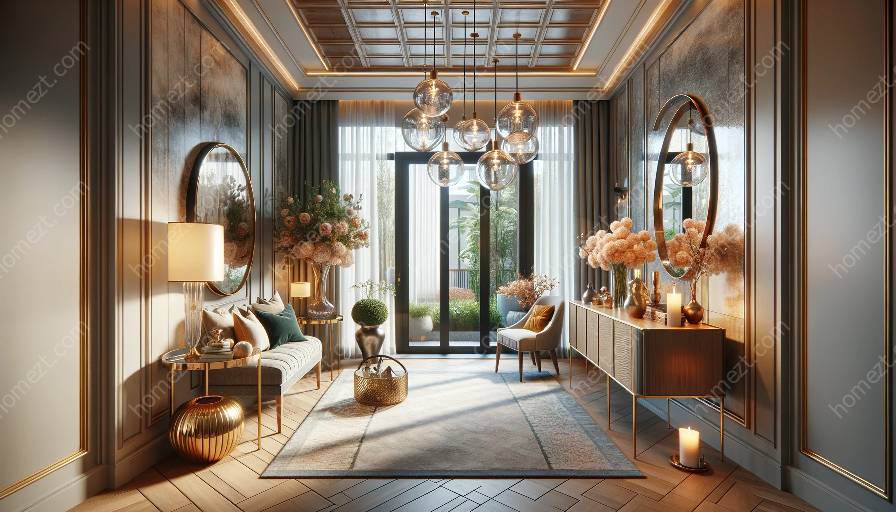The entryway is the first impression of a home, setting the tone for what lies beyond. In the realm of interior design and styling, the entryway plays a crucial role in welcoming guests and reflecting the overall aesthetic of the space. This article delves into the cultural and historical influences that have shaped entryway and foyer designs, providing insights into how these factors have contributed to the evolution of interior design.
1. Cultural Influence on Entryway Design
Throughout history, different cultures have placed significant emphasis on the design and function of entryways. These influences have manifested in various architectural styles and decorative elements that continue to inspire modern design trends.
1.1 Eastern Influence
The concept of the entryway holds deep cultural significance in many Eastern traditions. In Asian cultures, the entryway, or genkan in Japanese, serves as a transitional space where shoes are removed before entering the main living area. This practice reflects the idea of leaving external influences outside and creating a sense of purity within the home. Traditional Eastern entryways often feature intricate woodwork, sliding doors, and minimalistic design to evoke a sense of tranquility and harmony.
1.2 Mediterranean Influence
The Mediterranean region has historically embraced the concept of grand, welcoming entryways that exude warmth and hospitality. Influenced by Greek, Roman, and Moorish traditions, Mediterranean entryways often boast ornate arches, intricate tile work, and vibrant colors that reflect the region's rich history and culture. These elements create an inviting atmosphere that has made Mediterranean entryway design a timeless inspiration for interior designers worldwide.
2. Historical Evolution of Entryway Design
The evolution of entryway design is deeply intertwined with different historical periods, each leaving a lasting imprint on the way entryways are conceived and designed.
2.1 Renaissance Influence
During the Renaissance period, entryways became a symbol of status and wealth, with elaborate detailing and grand doorways serving as a reflection of the homeowner's social standing. This era introduced the concept of the grand foyer, a space that conveyed opulence and sophistication through intricate moldings, symmetrical designs, and lavish materials such as marble and gold leaf. Renaissance entryways paved the way for the grand, statement-making foyers seen in many historic residences.
2.2 Victorian Influence
The Victorian era marked a shift in entryway design, emphasizing the use of decorative elements and eclectic influences. Victorian entryways often featured intricate woodcarvings, stained glass windows, and decorative tiles, reflecting the era's fascination with ornamentation and revivalist styles. The eclectic nature of Victorian entryways allowed for a blend of historical references, resulting in unique and personalized design expressions.
3. Impact on Interior Design and Styling
The cultural and historical influences on entryway design have left a lasting legacy that continues to shape the realm of interior design and styling in profound ways.
3.1 Aesthetic Integration
By understanding the cultural and historical roots of entryway design, interior designers are able to integrate various elements and motifs into contemporary spaces, creating a sense of continuity and narrative throughout the home. Whether it's incorporating Eastern-inspired doorways or Mediterranean tile patterns, these influences serve to infuse character and authenticity into modern entryway designs.
3.2 Functional Adaptation
Historical influences have also informed the functional aspects of entryway design. The practicality of Eastern genkan, for example, has influenced modern interpretations of mudrooms and transitional entry spaces that cater to the need for organization and cleanliness. Similarly, the opulent grandeur of Renaissance and Victorian entryways has translated into the design of statement foyers that make a lasting impression on visitors.
4. Conclusion
The cultural and historical influences in entryway design showcase the deep-rooted significance of these transitional spaces, highlighting their ability to convey a sense of identity, hospitality, and functionality. By acknowledging and drawing inspiration from these influences, interior designers and homeowners alike can create entryways and foyers that not only make a striking first impression but also contribute to the overall narrative and aesthetic of the home.


























